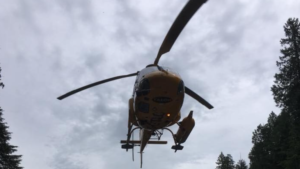BC Rural Health Network – Presentation to Select Standing Committee on Finance

Edward Staples, President BCRHN
June 10, 2020 – 11:05 am
Good morning. My name is Ed Staples and I’m the President of the BC Rural Health Network, a collection of over 30 community organizations working to improve health and wellness services in rural and remote BC.
As I was working on my presentation, I asked myself, “What can I say in five minutes that will have an impact on the health outcomes of rural BC residents?”
Perhaps the best way to answer this question is to summarize my presentation in one word, “access”. This word describes a number of concerns that rural residents deal with on a daily basis. It describes someone living in the Tulameen Valley, for example, who has to figure out how to arrange the transportation, overnight accommodation, and meals required to see a specialist in Kelowna. And it describes someone who has to make the choice of paying for their prescription medicine or buying groceries for the week.
The BCRHN recognizes that there have been several improvements to healthcare services by this government over the past few years and we thank you for your part in making that happen. But there’s still work to be done. So here are some of our key areas of concern:
Access to specialist care.
In a survey of our members completed this month by the Centre for Rural Health Research, they identified access to specialist care as the number one priority to be addressed by the BCRHN. It’s clear that this is the number one hardship for people living rural.
Rural Health Councils
In support of the recommendations in the Rural Evidence Review conducted by the Centre for Rural Health Research, the BCRHN endorses the concept of Rural Health Councils as a way to collaboratively engage the community in planning and decision-making that meet the health needs of rural BC communities.
Recruitment and retention of healthcare providers
This is simply a matter of supply not meeting the demand. With chronic shortages of healthcare professionals, many British Columbians, especially in rural BC, are not receiving the care they need, when they need it.
Transportation
For people living in rural communities, access to health care services requires access to transportation. As our population ages, this requirement means a greater dependency on transportation provided by others. Public transportation service in rural communities is limited or non-existent. Improvement to local and regional transportation is urgently needed and we call on the government to address this long-standing problem.
And there are others on the list that the BCRHN will be including, along with a more detailed description, in our written submission.
The BCRHN believes that one of the best solutions to the problems and concerns that I’ve outlined is the Community Health Centre model. Since my two colleagues in this panel-grouping are focusing their presentation on this topic, I will be brief.
The BCRHN recognizes the value of CHCs as a way to address the health needs of vulnerable and marginalized populations. We are pleased with present initiatives by the Ministry of Health to support existing CHCs and establish new ones, especially in rural and remote regions of the province. We are working in collaboration with the BC Association of Community Health Centres and the BC Health Coalition in an effort to expand these initiatives to include all communities that have expressed an interest in, and would benefit from the CHC model of primary care. We call on this committee to provide adequate funding in support of this important initiative.
In this time of Covid-19 we have all come to appreciate the realities of the “new normal”. And we understand that this presents incredibly difficult challenges for this committee. Throughout the province, across Canada, and around the world, finance committees are exploring ways to provide funding for government services with a projected reduction in revenue. The BCRHN urges the government to establish a post-pandemic legacy, developing a budget that draws on the lessons we’ve learned from COVID-19. To do this we ask you to consider the importance of providing morally responsible deficit financing to meet the needs of all British Columbians.
In closing, I’d like to thank the Honourable members for this opportunity to share the views of the BCRHN and we look forward to future opportunities where we can work collaboratively to make life better for British Columbians.
+++++++++++++++++++++++++++++++++++++++++++++++++++++++++++++++++++
Committee questions after the presentation:
M. Dean: Thank you to you all for your daily work and also for taking the time to come and present to the committee. We really appreciate it.
I’m really interested in the CHCs because of the team-based model and the community-based philosophy as well. I have two questions. The first one is: how do you measure the return on investment and the impact on the social determinants of health? What are the metrics that have been accumulated across CHCs to really demonstrate that and quantify that?
Then the second one is: if the plan for increasing CHCs in each health authority was accelerated, as you’re requesting, does the sector actually have capacity to be able to respond to that kind of a plan — increasing the rollout of CHCs in communities? Thank you.
G. Showler: I’ll address the latter question. In terms of capacity for new CHCs, absolutely. I think, based on the conversations that I’m having around the province, I would say that their communities are queuing up at this point. There are many communities that are already in the process of developing proposals. They have health foundations or societies formed. We know that the interest is coming not just from communities but from divisions of family practice and from health authorities as well.
I think that if you look at our current membership of the 23 members, that alone supplies some capacity, in terms of organizations that are already able to scale up. Then I think, absolutely, in terms of net new communities. I could sit here and name half a dozen, easily, that are willing and ready to go, including in your own constituency.
In terms of evaluation….
M. Dean: Can I just follow up on that. I’m concerned about the professional capacity as well. You know, we’re trying…. We’re making lots of efforts to attract medical professionals to British Columbia. We still have a lot of unattached people living in our communities who don’t even have their own family doctor.
So the team-based approach is really important, but we still need to make sure that we’ve got the professionals able to provide the services.
G. Showler: Yeah. Obviously, there is an overall capacity issue. But I think a lot of what we see is not necessarily the number of health care professionals that are out there but the ways that they’re working — in walk-in clinics and different types of service delivery, where they’re not doing the rates of attachment that you would find in primary health care.
I think the addition of allied health also increases the potential for attachment. For each nurse practitioner or physician, you’re able to attach more people. With the addition of registered nurses, physiotherapists, other types of providers — absolutely. It will take some time to get all those people integrated in.
I think the other thing that we know is that health care professionals, especially younger and newly trained health care professionals, really want to work in this model. It’s quite attractive to new grads. Younger doctors and nurse practitioners want to work in team-based care. They don’t necessarily want to be small business owners — have those organizations handle a lot of the administrative capacity for them.
I was the director of health services at Cool Aid for a number of years, and we turned away providers regularly. We had a waiting list of doctors that wanted to get in there and work because of the attractiveness of the environment. That was even working in a really complex and difficult population.
B. D’Eith (Chair): Thank you. Colleen, I think, wanted to comment on Mitzi’s question first.
Please go ahead, Colleen.
C. Fuller: I’m not exactly sure what you meant by “return on investment,” but the evidence to support the CHC model is very robust internationally and in other parts of Canada — not in B.C., because we don’t have a long history. We also don’t have as many CHCs, as other provinces do, which are modelled on the classic CHC model that Grey was describing.
In Ontario, there has been an accumulation of very positive evidence showing that the health outcomes for people who have chronic health conditions, like diabetes, for example…. Those patients who are attending a CHC, are members of a CHC, have lower hospitalization rates and lower use of emergency departments. So there is evidence like that, that is accumulating across the country, which is very positive.
B. D’Eith (Chair): Thanks, Colleen.
Ed, you had made a comment in the chat.
E. Staples: Yeah. I just wanted to agree with what Grey was saying about the fact that communities are ready and able to establish CHCs. The B.C. Rural Health Network has already begun work on contacting and orienting people that are members of the B.C. Rural Health Network that have expressed an interest in establishing a CHC.
We’re well on the way, within the members of our organization, to prepare for the eventual establishment of a CHC. We are ready. We’re chomping at the bit here. We are very interested in the CHC model as a way to address rural and remote concerns.
B. D’Eith (Chair): Thanks, Coleen.
Go ahead, Ed.
E. Staples: Just to follow up on that — thank you, Colleen, for that — the B.C. Rural Health Network has First Nations and Indigenous membership in the province, particularly on Vancouver Island and in the north, which is a good way for our organization to understand the concerns and the needs of our First Nations and Indigenous communities. We’re also very encouraged and excited about the formation of the rural citizens perspective group as part of the Rural Coordination Centre of B.C. and the First Nations Health Authority initiatives around the pentagram partners plus table.
At that table, in the group that we’re forming, there will be 15 of us, five of whom will be First Nations representatives. So we’re quite excited about that as a way for us to understand and communicate the concerns of our First Nations friends and colleagues.
B. D’Eith (Chair): Thanks, Ed. We’re over time now. So, Donna, if you could be our last question. Please go ahead, and if we could keep it short, we’d really appreciate it.
D. Barnett: Thank you. I’ll try.
Thank you for all your presentations. Ed, I just have a couple of questions for you. First of all, rural health councils. We used to have rural health councils. But once they became appointed by government, they lost all their community focus.
How would you see rural health councils being put back together?
E. Staples: That’s a very, very important question. Thank you, Donna. It’s a difficult question because it’s rather complex.
The idea of the rural health council is that it would represent the views and the needs of each individual community, not appointed but drawn on the leaders and the stakeholders within a community who understand what the needs are from the patient perspective. It’s a patient-centred approach to developing a collaborative community engagement model that will look at what a community needs and also be involved high up on the spectrum of the engagement process — not necessarily an empowerment but certainly something that allows for robust input and advice and decision-making.
I don’t know whether that answers your question, Donna, but that’s kind of where we are right now with that.
D. Barnett: If I could just ask one last question. How would these be funded?
E. Staples: I’m not sure. Again, that’s a really good question. This is a very…. It’s not a new concept. This is something that has been done around the world, and it has a lot of support and interest. But I don’t see that there would be a great deal of need for funding other than, initially, to support the orientation and the training of people that would be involved in that.
I would love to have a conversation with you about that offline, if you’re interested. I have lots more information that I could share. Unfortunately, we just don’t have the time here today. Thank you for your questions.
D. Barnett: I would love to, so get a hold of me. I’d love to talk to you.
E. Staples: Great. Fantastic. Thank you, Donna.
B. D’Eith (Chair): Great. Thanks, everyone. A very, very good conversation. Thank you so much. I’ll have to end it there, because we’re out of time. So thank you very much to the panellists.
Unfortunately, Members, there isn’t going to be time for a break. So if you could just stay on. I apologize for that, but I thought it was very important for us to hear from these panellists and for them to be able to answer the questions.
++++++++++++++++++++++++++++





